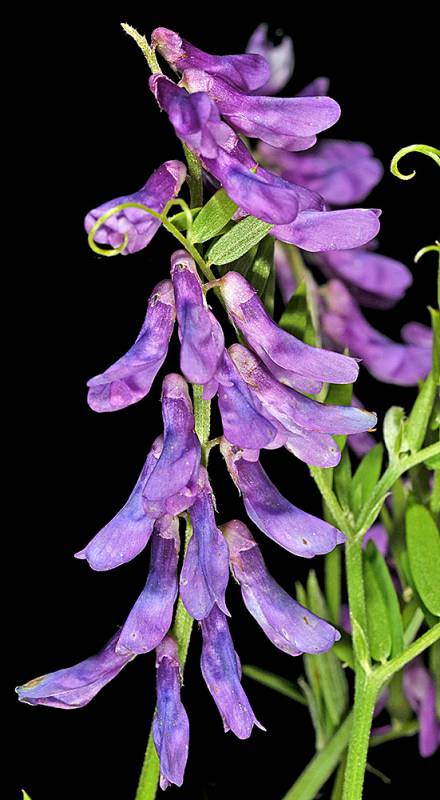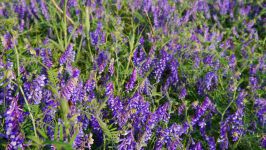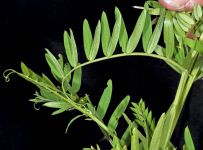Distribution: Occurring in scattered locations on both sides of the Cascades crest in Washington; British Columbia to California, in scattered locations elsewhere in North America.
Habitat: Roadsides, fields, meadows, wastelots, and other disturbed open areas.
Flowers: May-July
Origin: Introduced from Europe
Growth Duration: Perennial
Conservation Status: Not of concern
Pollination: Bumblebees, bees, butterflies, flies
Glabrous to appressed-pubescent, clambering perennial, the stems 0.5-1 m. tall.
Leaves pinnate, 6-12 cm. long, with well-developed tendrils; leaflets 12-18, linear, 1.5-3 cm. long, with a needle-like tip; stipules toothed to entire, 7-15 mm. long.
Inflorescence of axillary racemes, these longer than the peduncles and exceeding the leaves; flowers pea-like, 20-70. closely packed, 10-15 mm. long, pendulous, violet-purple; calyx half as long as the corolla, the tube 2-3 mm. long, oblique and slightly bulged, the upper 2 lobes very short, triangular, the lower 3 much longer; style densely bearded at the tip.
Pod 1.5-2 cm. long and 6-10 mm. broad, flattened, several-seeded.
Publication: Sp. Pl. 2: 735. 1753.
Vicia cracca L. ssp. grossheimii (Ekutim.) Hashimov, invalidly published
Vicia cracca L. ssp. tenuifolia (Roth) Bonnier & Layens [KZ99]
Vicia cracca L. var. angustissima Neilr.
Vicia cracca L. var. tenuifolia (Roth) Beck
Vicia semicincta Greene
Vicia tenuifolia Roth
PNW Herbaria: Specimen records of Vicia cracca in the Consortium of Pacific Northwest Herbaria database
WA Flora Checklist: Vicia cracca checklist entry
OregonFlora: Vicia cracca information
E-Flora BC: Vicia cracca atlas page
CalPhotos: Vicia cracca photos
























